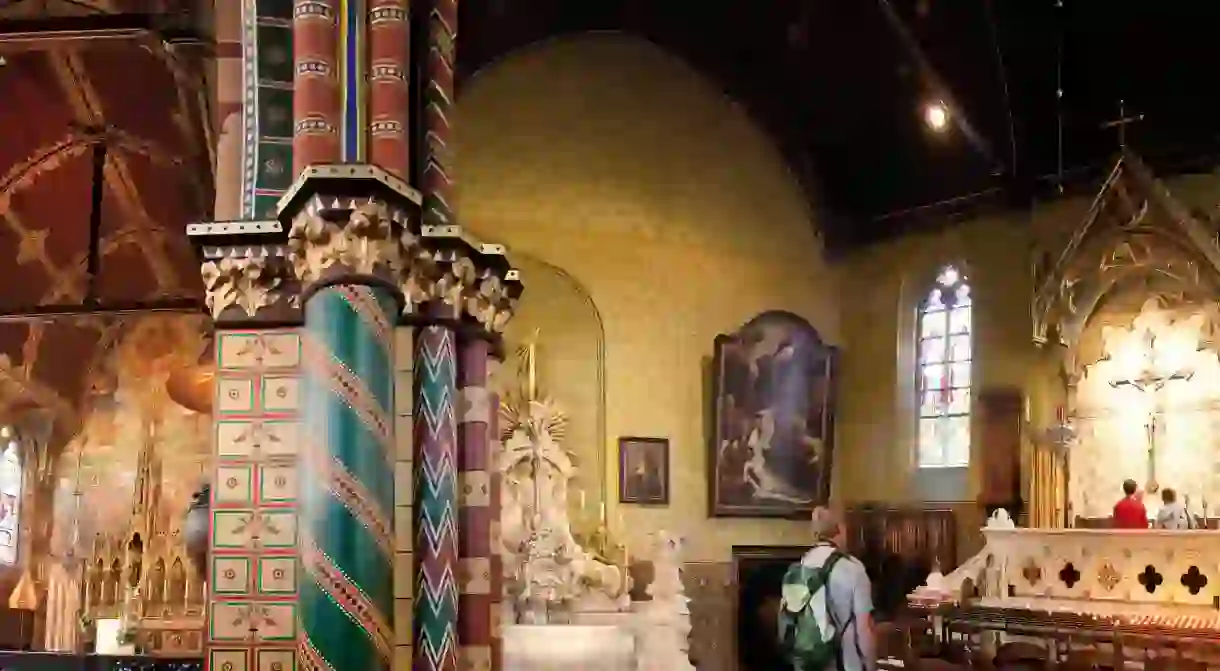The Story Behind Bruges’ Basilica of the Holy Blood

Every day without fail, ancient Bruges’ most cherished relic is trotted out so that faithful Christians and a wave of tourists can admire it. Having prompted the building of the Basilica of the Holy Blood as early as the 12th century, an ornate vial filled with a little piece of fabric is carefully put on display and adored for hours on end. Why all the fuss? This trinket is believed to hold the blood of Christ himself.
The religious gem and the holy brotherhood that keeps it safe have a busy schedule: every morning after mass at 11:30 am and every afternoon at 2 pm, it is taken out to be the subject of intense worship, a treatment informed by the steady veneration it has received over the past eight centuries. It’s the reason the slightly odd Basilica of the Holy Blood exists; the ornate double building, part Romanesque and part Gothic, has dedicated itself to sheltering this mysterious object thought to have been brought back from the Second Crusade by the Count of Flanders in 1150.

Standing in a corner of the central Burg Square, squished between City Hall and a row of little shops, the small-scale basilica doesn’t stand out that much, even with its dark Gothic façade boasting gilded statuettes. Its flamboyant front was only added in the 16th century, to connect two separate chapels: the lower Romanesque Saint Basil Chapel and the upper Gothic Holy Blood Chapel. Flemish Count Thierry of Alsace ordered their construction in the 12th century, and they would come to house and protect the relic he had with him upon his return from the Holy Land. A crystal flask with intricate gold settings, judged by historians to be Byzantine, encases the shred of cotton with clots of blood visible on it. Legend has it that the crusader received it from the King of Jerusalem and that Jesus’ disciple Joseph of Arimathea, who had readied Christ’s body before burial, originally collected the blood.

Up until now, experts have failed to either confirm or debunk the relic’s authenticity – a fact that hasn’t kept Bruggelingen and their priests from celebrating and honouring the gem in a temple built for the activity. Over the ages, the basilica has come to hold all kinds of religious art, including paintings, sculptures, jewellery and even lacework. While the Saint Basil Chapel is simpler – though it still holds precious 12th- through 14th-century artefacts – it’s on the way up the staircase leading to the Holy Blood Chapel that the stained-glass windows, vaulted ceilings and general lavishness really come to impress the visitor. The upper chapel itself is luminous with gold detailing, rich colours and a large mural depicting the relic’s journey to Bruges.

The vial leaves this sumptuous home only once a year on Ascension Day, to be the star of the Holy Blood Procession. This parade, part of UNESCO’s Intangible Cultural Heritage List, has been around since at least 1303 and is still put on today. The show includes the re-enactment of several biblical scenes, gorgeous medieval costumes, and animals such as camels and once, in 2016, a bunch of unruly sheep (that year, several woolly rascals got away from their shepherd during the parade and ran straight into a shop, leaving smelly presents behind as they went).













